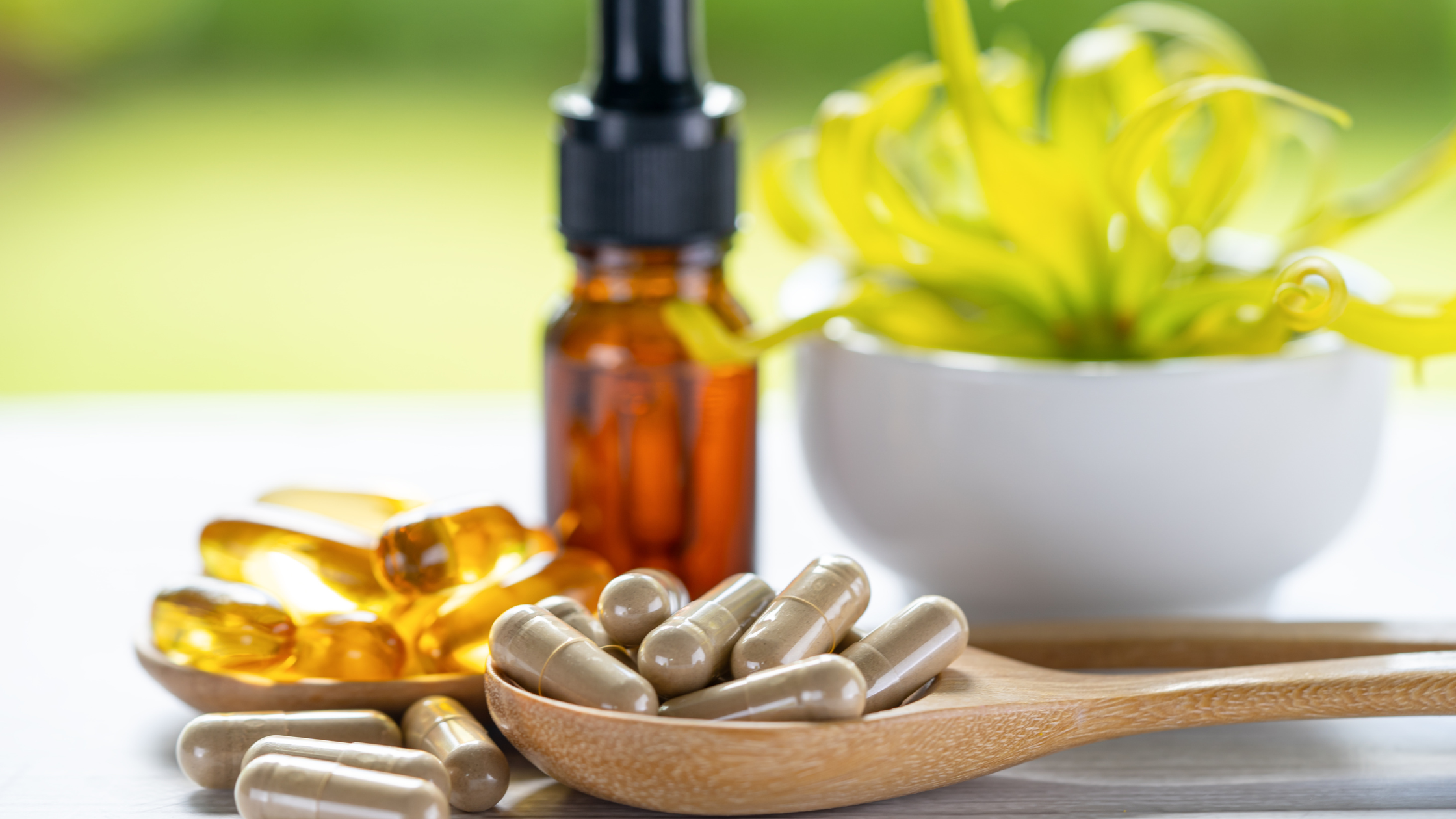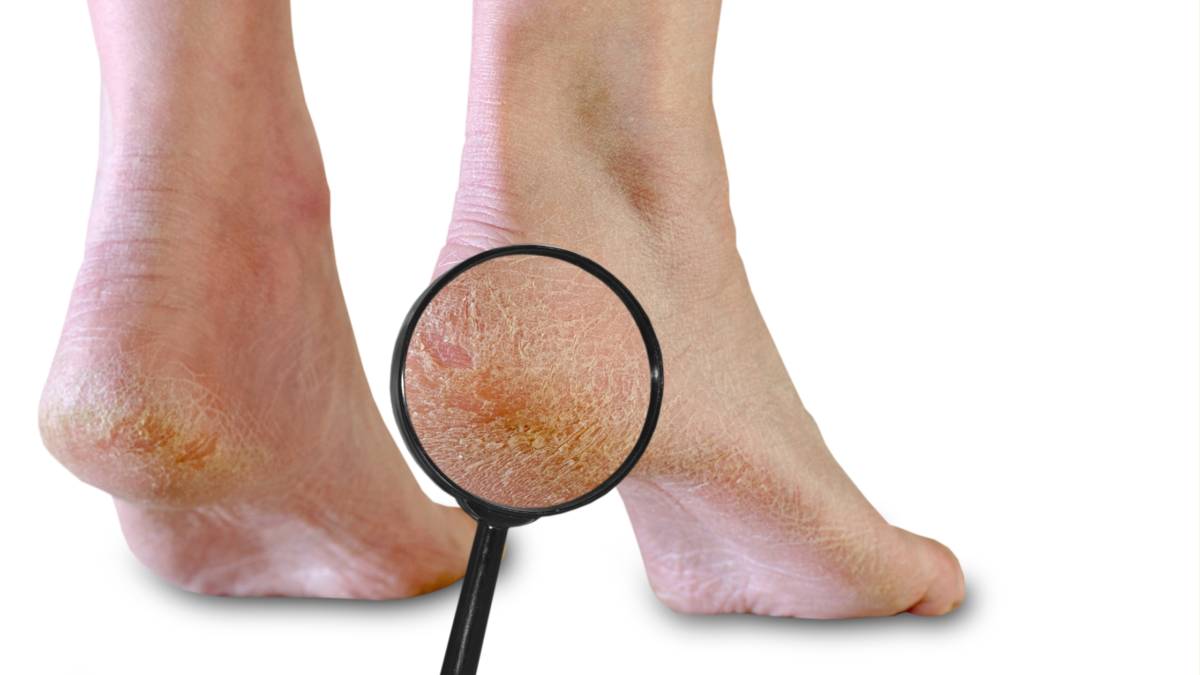


Medically Reviewed By Margaret Etudo. Written By The Vitamins For Woman Team.
Cracked skin can be painful, unsightly, and stubborn. Knowing what causes it and how to treat it quickly is the key to smooth, healthy skin.

Cracked skin is more than just a cosmetic concern; it’s a sign that your skin barrier is struggling.
From harsh weather to underlying health conditions, the causes can vary, but the result is often the same: dry, rough skin that splits open, stings, and even bleeds.
If you’ve ever experienced the sharp discomfort of cracked heels or the constant irritation of splitting skin on your fingers, you know how frustrating and even disabling it can be.
Fortunately, there are fast, effective treatments to restore your skin and prevent the cycle from repeating.
In this guide, we’ll explain why cracked skin happens, how to heal it quickly using dermatologist-approved techniques, and which products offer the best relief.
When your skin becomes dry, its protective barrier weakens, and tiny fissures can form. Over time, these small cracks can deepen into painful splits that burn, bleed, or become infected. But why does skin reach this breaking point in the first place?
Cracked skin often stems from external factors or daily habits that damage the skin’s moisture barrier. The most common causes include:
Each of these causes can act alone or together to compromise your skin’s health, particularly on areas that endure constant use, like hands and feet.
Sometimes, cracked skin is more than just a surface problem; it’s a symptom of something happening internally. Several health conditions can directly lead to skin dryness and cracking:
If you’re noticing persistent cracked skin despite good skincare habits, it may be worth evaluating these underlying conditions with your healthcare provider.
Healing cracked skin quickly starts with understanding how to rehydrate and repair your skin’s barrier. Once that barrier is restored, your skin can hold onto moisture again, and real healing begins.
The “soak and seal” method is one of the most effective techniques for repairing cracked skin, especially on your hands and feet. It works by deeply hydrating the skin first, then sealing in that moisture with a rich emollient.
Start by soaking the affected area in lukewarm water for 10 to 15 minutes. This softens the skin and allows moisture to penetrate the outer layer.
Don’t use hot water. It may feel soothing, but it strips away the natural oils your skin desperately needs.
After soaking, gently pat the area dry with a soft towel, but leave it slightly damp. Immediately apply a thick, fragrance-free ointment or cream.
This seals in the moisture and helps rebuild the skin barrier. You want to use products rich in ceramides, urea, or petrolatum ingredients that support deep healing and barrier repair.
Repeat this process once or twice daily, depending on the severity of the cracks. With consistency, you’ll notice significant improvement within a few days.
Overnight treatments can take your healing process to the next level, especially when dealing with deeply cracked heels or splitting fingertips.
These treatments work while you sleep when your body is naturally in repair mode, making them incredibly effective.
Right before bed, apply a generous layer of ointment to the cracked area. Products like petroleum jelly, healing balm, or thick occlusive creams are ideal.
Once you’ve applied your treatment, cover the area with cotton socks or gloves. This locks in the moisture and protects your sheets from getting greasy.
By morning, your skin will feel noticeably softer, and the cracks will appear less severe. Repeating this simple step nightly can dramatically speed up your skin’s recovery, especially when combined with the “soak and seal” method during the day.
Applying an occlusive balm throughout the day for severely cracked skin, especially on the hands and fingertips, can prevent further splitting and promote healing.
Occlusives like petrolatum, lanolin, and beeswax create a protective seal over the skin, reducing water loss and shielding cracks from irritants and bacteria.
This is particularly helpful if you’re constantly washing your hands or exposed to irritants at work.
Just dab a small amount on cracked areas after each hand wash or exposure to water. Even if you’re wearing gloves, occlusives keep skin protected inside.
Liquid bandages can offer immediate relief for painful, open fissures (especially on fingers and heels).
These over-the-counter products dry quickly to form a waterproof seal over the crack, protecting it from further tearing, dirt, and bacteria. This speeds up healing by allowing the area to stay moist and undisturbed.
Liquid bandages are great for people who can’t avoid using their hands or walking around all day. Just apply it to clean, dry skin and reapply every 1–2 days until the skin closes.
Cracked skin often builds up layers of thick, dry flakes that block moisture absorption. A gentle chemical exfoliant (like lactic acid or urea) helps dissolve dead skin cells without irritating fresh cracks.
This prepares your skin to absorb healing creams and ointments better. Avoid harsh scrubs or loofahs; they can worsen the cracks.
Instead, choose a foot cream with 10–20% urea or a body lotion with lactic acid. Apply once daily at night until rough skin smooths out.
If your cracked skin flares up in cold weather or after turning on the heater, it’s likely due to dry indoor air.
Running a cool-mist humidifier in your bedroom can help maintain optimal humidity (around 40–60%), which prevents your skin from drying out overnight.
Pair this with your overnight balm treatment, and you’ll see a significant improvement in skin texture within days.
Not all moisturizers are created equal. When it comes to healing cracked skin, you need products that go beyond surface hydration. The best products contain ingredients that attract moisture, repair the skin barrier, and form a protective seal to prevent further damage.
Eucerin Advanced Repair is a go-to choice for extremely dry, cracked skin. It contains a powerful blend of urea and ceramides, essential for restoring your skin’s natural barrier.
The thick formula absorbs well, making it ideal for hands, feet, and elbows. If you’re dealing with recurring skin cracks, this product can make a noticeable difference in just a few days.
CeraVe Moisturizing Cream is another dermatologist-recommended staple. Its multi-ceramide formula makes it unique, which mimics the skin’s natural structure. It hydrates and helps your skin retain moisture for more extended periods.
This cream is gentle enough for sensitive skin and strong enough to tackle deep dryness, making it a great daily moisturizer for cracked hands or legs.
Suppose cracked heels are your primary concern; the Onyx Professional Cracked Heel Repair Balm explicitly targets that area. With ingredients like urea and lactic acid, it gently exfoliates dead skin while deeply moisturizing the new layer underneath.
It’s thick, rich, and made for overnight use. Apply it before bed, cover it with socks, and wake up with smoother, healthier heels.
If you suffer from painful cracks on your fingertips, especially during colder months or from frequent handwashing, O’Keeffe’s Working Hands is a cult favorite.
This thick, concentrated hand cream is formulated with glycerin to draw moisture into the skin, and it creates a barrier that protects your fingertips from further damage. It’s non-greasy, fragrance-free, and fast-absorbing perfect for daily use.
For a spa-like treatment at home, the Aveeno Repairing CICA Foot Mask delivers intense hydration using prebiotic oat and shea butter. CICA (short for Centella Asiatica) helps soothe irritation while repairing damaged skin.
Simply wear the mask like a pair of socks for 10–15 minutes, and your heels will feel soft, calm, and moisturized. It’s ideal for those who need deep conditioning without the mess of ointments.
Most cases of cracked skin respond well to over-the-counter treatments and home care. However, there are specific warning signs that indicate it’s time to get professional help:
Never ignore skin cracks that continue to worsen, especially on your feet. Left untreated, even small fissures can develop into painful wounds or infections.
Deep cracks take time to heal but respond well to a routine that includes soaking, sealing, and skin protection. Using thick ointments, sleeping with socks or gloves, and avoiding irritants like harsh soaps or hot water will accelerate healing. Stick to your routine consistently for visible results.
Yes, cracked or persistently dry skin can sometimes indicate a deficiency in essential nutrients like vitamins A, D, zinc, or essential fatty acids. These nutrients help maintain the skin’s elasticity, hydration, and repair ability. If moisturizing alone isn’t helping, a multivitamin might fill nutritional gaps.
Absolutely. Cracked skin creates tiny openings in your skin’s barrier, which allows bacteria and fungi to enter. Signs of infection include redness, swelling, warmth, pus, and pain. In severe cases, cracks can lead to cellulitis or other complications, especially in people with diabetes or poor circulation.
Cracked skin may look small on the surface but can cause discomfort if not treated properly. Fortunately, you can speed up healing and avoid complications with gentle care, hydration, and the right products.
Be consistent, give your skin the moisture it needs, and don’t ignore deeper signs of an issue. Cracked skin doesn’t have to be something you live with, whether it’s your heels, hands, or fingertips. You can fix it and keep it from coming back.

medically reviewed by margaret etudo, BPharm. written by the vitamins for woman team.